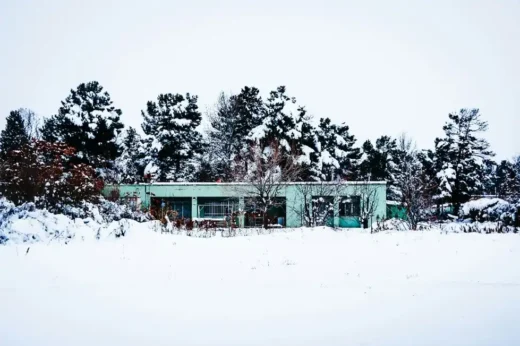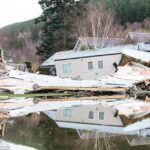Common weather hazards affecting homes in small towns, House living space design guide
Common Weather Hazards That Affect Homes in Small Towns
25 May 2025
Weather patterns can be unpredictable, especially in small towns where geographical isolation and limited infrastructure heighten the impact of environmental hazards. These communities often face a unique set of challenges when severe weather strikes, threatening homes, safety, and property.
While large cities may have robust emergency services and stronger infrastructure to buffer the effects of storms or sudden temperature changes, small towns like Franklin, TN, rely heavily on preventive maintenance and community preparedness. From roofs to basements, every aspect of a home in these areas is at risk when the weather becomes volatile.
Roof Damage from Wind and Ice
The roof serves as the first line of defense against environmental threats. It shields homes from wind, rain, snow, and debris, making it one of the most vulnerable parts of a house in adverse weather conditions. High winds can lift shingles or even rip off entire sections, exposing the interior to moisture damage. During winter, the formation of ice dams is a major concern. These icy ridges prevent proper drainage, allowing water to back up under the shingles and leak into the attic.
In areas that experience frequent snowstorms or heavy rainfall, the structural integrity of a roof must be regularly evaluated. Overloaded roofs can cave in, leading to costly repairs and potential injury.
Homeowners in small towns often depend on professional evaluations to catch issues before they escalate. One option is hiring a roofing company in Franklin that specializes in weather-proofing materials and construction methods suited for rural conditions. Their experience with local climate trends ensures that roofs are not only repaired but fortified to withstand future incidents.
Flooding and Water Intrusion
Flooding is a pervasive threat in many small towns, especially those near rivers, lakes, or regions with poor drainage systems. Sudden downpours, snowmelt, or failing storm drains can quickly inundate basements and ground floors. Homes built on low-lying land are particularly at risk. Without adequate grading and waterproofing measures, water can seep into foundations, weakening the structure and promoting mold growth.
Sump pumps, French drains, and backwater valves are common preventative tools, yet they require regular maintenance. In communities where professional help may not be immediately available during emergencies, residents must stay proactive in inspecting and upgrading their drainage systems. Sandbagging and sealing entry points are temporary fixes but effective in short-term scenarios.
Snow Accumulation and Structural Strain
Prolonged snowfall not only threatens the roof but also impacts other aspects of home safety. Weighty snow buildup around the exterior can strain siding, gutters, and porches. Ice formation around entryways creates slip hazards and makes access difficult during emergencies. Moreover, blocked vents and chimneys due to snow can cause dangerous indoor air conditions, especially when using wood-burning stoves or gas heaters.
Heating systems themselves also face pressure during extreme cold spells. Pipes are prone to freezing and bursting if insulation is inadequate. Insulated wrapping, heating cables, and proper indoor temperature regulation are essential to prevent this issue. For homes with older plumbing, replacements or modernizations are often necessary.
Windstorms and Flying Debris
Windstorms pose a risk not only to roofs but also to windows, doors, and outdoor structures such as sheds or garages. In small towns, many homes have older wooden windows or screen doors that are ill-equipped to handle high gusts. During a storm, unsecured patio furniture, branches, or construction materials become hazardous projectiles capable of smashing through glass or damaging siding.
Installing storm shutters or impact-resistant windows significantly enhances protection. Additionally, reinforcing garage doors and securing outdoor items before a storm are basic precautions that reduce damage. Trees surrounding a home should be pruned regularly to prevent limbs from snapping and causing destruction.
Power Outages and Electrical Hazards
Weather-related power outages can be especially disruptive in small towns where backup infrastructure may be minimal. Ice storms and strong winds often knock out power lines, leaving homes without electricity for hours or even days. This affects not just lighting and communication but also essential systems like heating, cooking, and refrigeration.
A sudden outage in freezing conditions can be life-threatening. Portable generators are a common solution, but improper use carries its dangers, such as carbon monoxide poisoning or fire risk. Ensuring that generators are placed outdoors and used according to safety guidelines is critical. Surge protectors and circuit breakers also help mitigate electrical damage once power is restored.
Hailstorms and Exterior Damage
Hailstorms can occur without warning and cause extensive damage in a short span. Siding, windows, cars, and roofing materials are all susceptible. In towns where homes may have aluminum or vinyl siding, hailstones can leave lasting dents or holes that compromise insulation and visual appeal. Skylights and solar panels are particularly at risk if not designed to withstand impact.
To mitigate damage, impact-resistant roofing materials, reinforced skylights, and storm-rated sidings are becoming more popular. Property owners should also inspect their insurance policies to ensure that hail damage is adequately covered.
Drought and Soil Shifting
While flooding is often discussed, prolonged droughts present their challenges. Dry soil can shrink, causing foundations to shift or crack. This is particularly concerning for homes built on expansive clay soils, which are common in many inland regions. Gaps may appear between the soil and foundation, increasing vulnerability to pests and water intrusion when rain finally does arrive.
Landscaping plays a vital role in stabilizing soil moisture. Deep-rooted native plants, proper mulching, and controlled irrigation help retain balance. Homeowners must avoid overwatering in dry spells, as it can create uneven moisture pockets leading to further movement. Foundation watering systems are available to maintain consistent soil hydration, reducing the risk of structural stress.
Lightning and Fire Risks
Isolated communities are often more susceptible to wildfires and lightning strikes due to the presence of open land, dry vegetation, and sparse emergency services. A lightning strike can ignite dry brush or directly impact a home, especially one lacking grounding systems. Fires may spread rapidly if not contained, threatening entire neighborhoods.
Fire-resistant materials, such as metal roofing or treated wood, provide some defense. Installing lightning rods and surge protection devices minimizes the chance of electrical fires.
Small towns face a diverse set of weather-related threats that demand tailored approaches to home protection. From structural reinforcements to emergency preparedness, each aspect of a home must be scrutinized for vulnerability. While the unpredictability of weather cannot be controlled, its impact can be significantly reduced through preventive planning and timely action.
Comments on this guide to Common weather hazards affecting homes in small towns article are welcome.
+++
Home Improvement
Home Improvement Posts
Five various home remodeling programs
DIY Home Improvement Projects Tools
Essential power tools for home DIY enthusiasts
+++
Building Articles
Residential Architecture
Comments / photos for the Common weather hazards affecting homes in small towns advice guide page welcome






